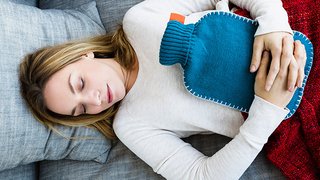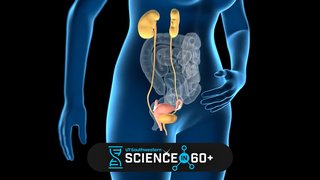Urinary incontinence is not ‘normal’ – but it is treatable
July 11, 2019

Have you ever leaked a bit of urine, maybe after sneezing or laughing? Urinary incontinence, or accidental bladder leakage, can be embarrassing, and it happens more often to women after childbirth or with aging. But it’s not normal! Treatment is available, and there’s no reason why women shouldn’t seek it.
Getting treatment for urinary incontinence can improve your quality of life. Imagine – no more rushing to the bathroom or avoiding exercise due to urine leakage! The first step toward effective treatment is determining which type of incontinence you have.
How do doctors diagnose urinary incontinence?
The treatments for different types of urinary incontinence are varied, so it’s important for us as doctors to make a distinction and ask patients the right questions about their symptoms. Their answers help us determine a diagnosis and formulate a treatment plan.
Some common questions we ask about urine leakage include:
- When did you start leaking urine?
- Do you leak urine with activity?
- Do you experience a sense of urgency to urinate?
- If so, do you leak urine if you can’t get to the bathroom right away?
- How many times per day and night do you go to the bathroom?
- Do you use pads to protect against urine leakage?
- If so, how many times per day do you change your pad?
Once we have a solid, overall view of a patient’s symptoms, we can determine whether she has stress or urge urinary incontinence, or a combination of both.
"The treatments for different types of urinary incontinence are varied, so it’s important to make a distinction and ask patients the right questions about their symptoms. Their answers help us determine a diagnosis and formulate a treatment plan."
Maria Florian-Rodriguez, M.D.

Schedule an appointment with one of our specialists today. Call 214-645-3848.
Two types of urinary incontinence
Stress urinary incontinence
Stress urinary incontinence is due to the weakening of the pelvic floor and is most commonly associated with childbirth. The pelvic floor is the term for the muscles and ligaments that support the bladder, uterus, rectum, and vagina. Women with this condition often leak urine when coughing, laughing, sneezing, exercising, or, in severe cases, just walking.
At UT Southwestern, we start with the most conservative treatment then work our way toward more advanced techniques. Based on a patient’s symptoms, we can take one of three approaches to managing urinary incontinence:
- Expectant management or observation: When the patient is not bothered by symptoms and decides not to have treatment.
- Conservative management: If a woman has bothersome symptoms of incontinence, pelvic floor muscle exercises can help strengthen the pelvic floor and improve symptoms. We can refer patients to a guided program with a physical therapist. We also can place a pessary, which is a plastic insert that supports the vaginal walls. A pessary can be removed, replaced, and cleaned at home.
- Surgical management: There are different types of procedures that can be performed for the treatment of stress urinary incontinence. The most common involves the surgical placement of a sling between the vagina and middle portion of the urethra to support the urethra like a hammock and control urine leakage. This is a same-day procedure, takes approximately 30 minutes to complete, and has a short recovery period. A similar procedure uses tissue harvested from the patient instead of a synthetic material to provide support to the urethra. We also can inject a material next to the urethra, which makes the area thicker and helps to prevent urine from leaking out. This procedure is usually reserved for women who are not surgical candidates or still have urinary leakage after a prior surgery.

Urge urinary incontinence
Overactive bladder or urinary urgency is the feeling of a sudden urge to urinate that is difficult to control and can lead to leakage if you don’t go to the bathroom right away. Symptoms also include going to the bathroom more than eight times a day or waking up multiple times at night to go to the bathroom.
The condition is associated with aging, obesity, menopause, and smoking. But what women eat and drink also can cause bladder irritation. Spicy, acidic, or citrusy foods and artificial sweeteners can cause problems, as can alcohol and caffeinated drinks such as coffee, tea, or soda.
Medication is the gold-standard treatment for urge urinary incontinence. These drugs allow the bladder to fill up with more urine before giving the signal that a patient needs to use the bathroom.
It can be hard for some women to talk about urinary incontinence, but it’s important to understand that it is not a normal part of aging nor a normal effect of childbirth. Help is available, so talk to a doctor about your treatment options today.
To schedule an appointment, call 214-645-3848 or request an appointment online.

About the author: Dr. Florian-Rodriguez’s clinical interests include the diagnosis and treatment of pelvic floor disorders such as pelvic organ prolapse and urinary incontinence in women. Her current research is focused on understanding the pathogenesis of pelvic organ prolapse and developing therapeutic strategies to help prevent prolapse after childbirth and use as adjuvant to pelvic reconstruction surgery. On a national level Dr. Florian-Rodriguez is part of the American Urogynecologic Society and has served as an abstract reviewer and session moderator at the annual meeting. She is also part of the Pelvic Floor Disorders Research Network, an NIH-supported initiative to perform multicenter research and study clinical and health aspects of pelvic floor disorders.

We’re one of the world’s top academic medical centers, with a unique legacy of innovation in patient care and scientific discovery.

Let’s stay in touch! Get our occasional alerts about new blog posts, upcoming events, opportunities, and more.











